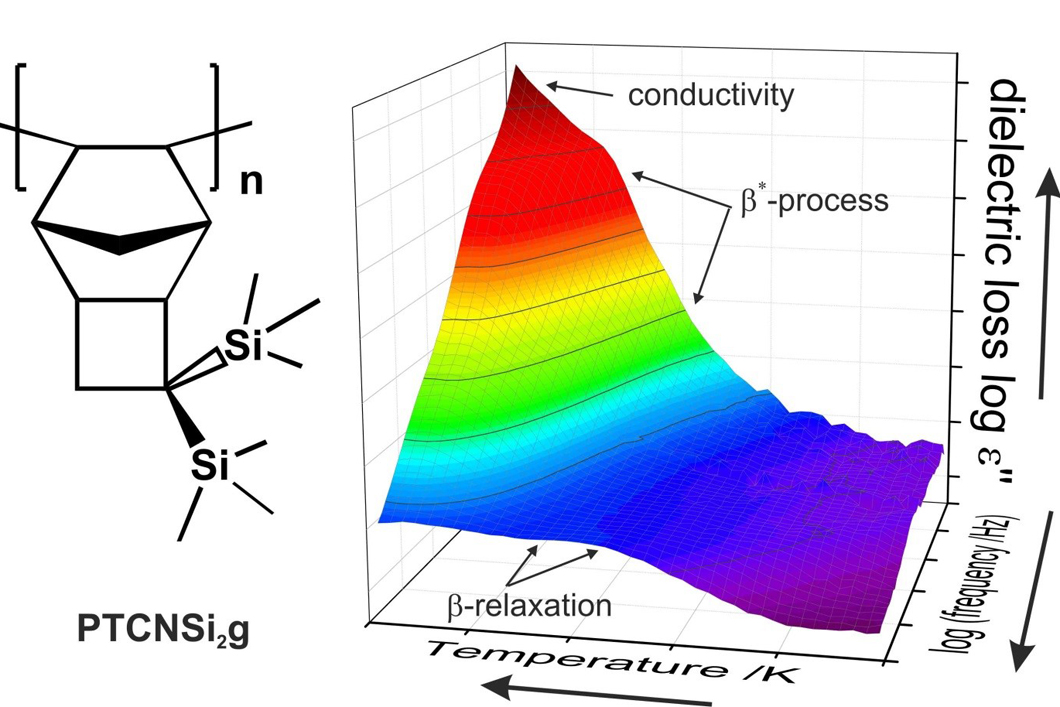
Chemical structure and dielectric relaxation spectrum of the polynorbonene PTCNSi2g
Source: BAM, Division Technical Properties of Polymeric Materials and Division Nanotribologie und Nanotribology and Nanostructuring of Surfaces
Membranes with special high-performance polymers as active separation layer can be employed in a large number of technical separation processes and open up a significant energy saving potential compared to conventional techniques based on cryogenic separation or adsorption. An essential application is the gas separation, e.g. in processing of natural gas from fossil sources or in upgrading of biogas as relevant renewable energy. Prerequisite for a progressing use of this technology is the development of novel more efficient polymers which have a high separation performance for different gases, e.g. for the separation of carbon dioxide from methane as primary combustible component in natural and biogas.
In recent years especially polymers of intrinsic microporosity (PIM) are in the focus of both, academic research and practical membrane development. The chemical structure of these polymers leads to a high chain stiffness and a contorted conformation and thus to an incomplete space-filling and a high fraction of free volume on an atomic/molecular length scale. On one hand this leads to the extraordinary gas transport properties; on the other hand this gives also rise to physical ageing caused by relaxation processes resulting in a very slow densification of the polymer packing and a significant loss in membrane performance.
Using broadband dielectric spectroscopy (BDS) such relaxation processes, related to molecular mobility of main chain or side groups of the polymer, can be investigated and characterized in detail. From that conclusions may be drawn with respect to physical ageing and its avoidance, but also relevant structure-property relationships can be established with respect to diffusive gas transport and structure formation during film casting from solution.
A first publication in 2016 presenting investigations of PIM-1 in co-operation with the University of Manchester lead to further inquiries and international co-operations. The current publication emerged from a co-operation with one of the leading institutes in the membrane field and presents first results of investigations on a series of polynorbornenes with intrinsic microporosity.
Molecular Mobility and Physical Aging of a Highly Permeable Glassy Polynorbornene as Revealed by Dielectric Spectroscopy
Huajie Yin, P. Chapala, M. Bermeshev, Andreas Schönhals, Martin Böhning
ACS Macro Lett., 2017, 6 (8), pp 813–818
BAM Department Materials Protection and Surface Technology, Division Nanotribology and Nanostructuring of Surfaces and Department Safety of Structures, Division Technical Properties of Polymeric Materials


